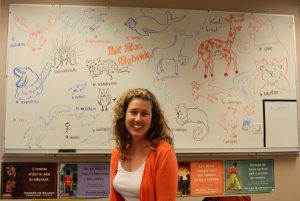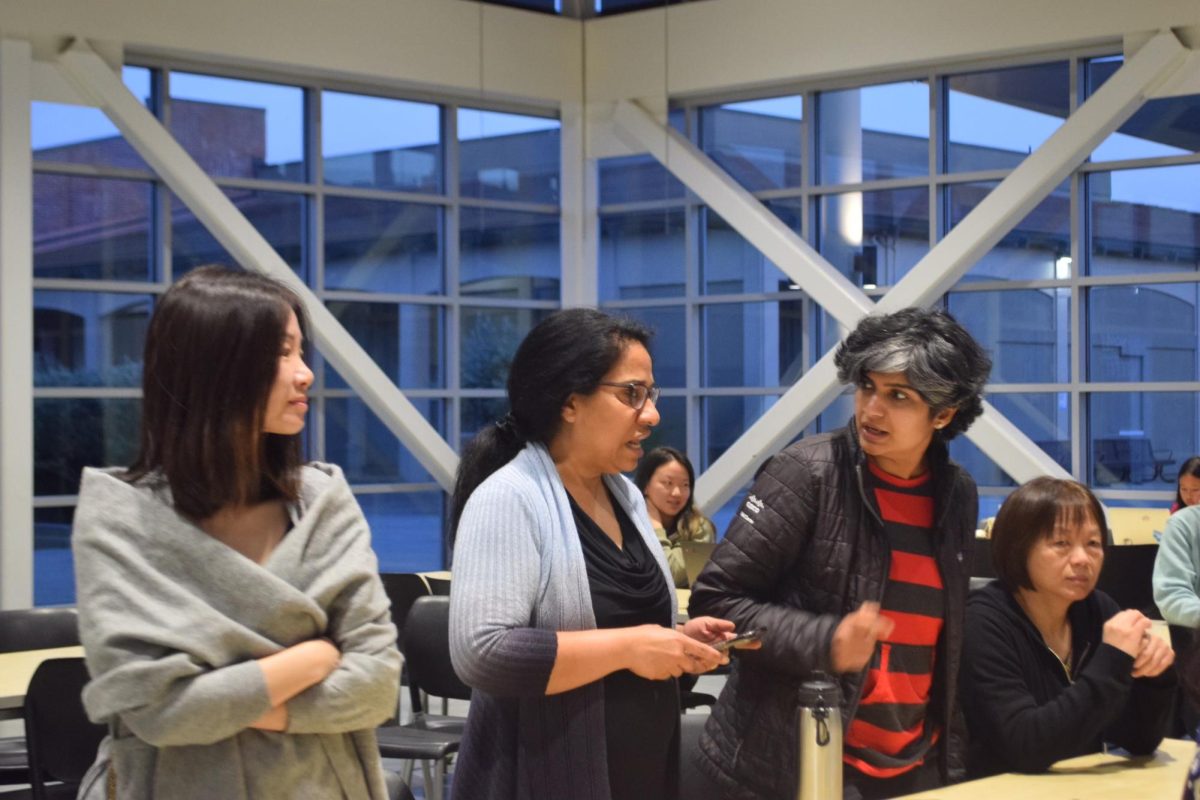
French teacher Melanie Lhomme started the year not only with the typical challenge of getting to know each of her new students, but also the task of establishing a standard for her French 2 class. Incoming freshman who took French 1 in middle school and upperclassmen who transferred from other high schools studied different textbooks. Each textbook differs greatly from the new French book at MVHS, Bien Dit, so Lhomme had to figure out how much each of her students knew before diving right into the French 2 curriculum. Kennedy Middle School students learned out of Bon Voyage, which was the textbook that MVHS used prior to last year, and students from Lawson Middle School used Discovering French. Lhomme has been tasked with figuring out what the incoming students have and have not learned and adapting the curriculum to fit this.
“The curriculum is a little more review for Bien Dit [students] in the first six months and a lot more new stuff for [incoming freshmen],” Lhomme said.
Due to this, she also has to make sure that MVHS sophomores who Bien Dit last year in French 1 understand the need for review.
“I have to make a deliberate effort to communicate that not everybody has seen that word,” Lhomme said, “and that this is new and it’s review for some, but it’s not review for everybody.”
Although Lhomme liked the old textbook, Bon Voyage, she thought that it was out of date, since the French 3 version was from 2002-before she had even graduated high school. The books were also in poor condition. People had written in them, there were pages missing and the bindings were falling apart. Bien Dit is a much newer book, and has the added bonus of online materials, including video grammar tutorials, extra online practice and an online textbook that students can access at home. Lhomme’s favorite is Grammavision, the video grammar tutorials. She loves the fact that students have access to the tutorials to watch if they are having trouble with a concept and need to review it again.
Students like sophomore Nathan Stevens like the technology integration too.
“If you already have the textbook, and if you don’t have access to it or you left it somewhere, or you have two families especially and they don’t have enough books for you [to have two], that’s really helpful, because…you can just go online,” Stevens said.
Freshman Ebba Westelius feels that the vocabulary in Bien Dit is more relevant because of how new it is.
Westelius also says that while Bon Voyage had more vocabulary per chapter, Bien Dit seems more to go more in depth when it comes to grammar.
Within the new book, there is a lot of focus on French culture. Every two chapters, there is a culture section focusing on a new french-speaking place, french literature at the end of each chapter and boxes about french lifestyle called ‘Flashculture’ throughout. Sometimes, the book will provide common slang terms used often in Francophone [french-speaking] places. Stevens says that this is extremely helpful, since these phrases allow students to sound more casual with French. The book also integrates expressions that may contain a verb, for instance, that students have not learned yet, to give students the ability to say more without needing to know the ins and outs of complex grammar that they are not ready to learn yet.
With the drastic differences between the books, Lhomme has had to work to figure out what freshman students know before diving right into the curriculum. The French Department had to adapt the curriculum last year as well, since last year was the first time that they started using Bien Dit. French teacher Sarah Finck taught French 2 the first year that they had Bien Dit, so Lhomme looked to her for advice.
“[Finck] got to see how everybody reacted the first year.” Lhomme said. “She was writing down any words that not the whole class knew at the beginning of each chapter.”
This helped her figure out what the class knew and didn’t know from the start. Also, if a new student asked a question relating to material that was covered in Bien Dit but may not have been covered in the other books, Lhomme would make sure to repeat the question so that others who may not know that material got the information.
Although it’s a challenge, Lhomme believes that with hard work, she can establish a pace for the whole class that works for students from different book backgrounds.
“As long as I deliberately am teaching it and acknowledging that everyone’s coming from somewhere different,” Lhomme said, “ I think that we can get on the same page.”









